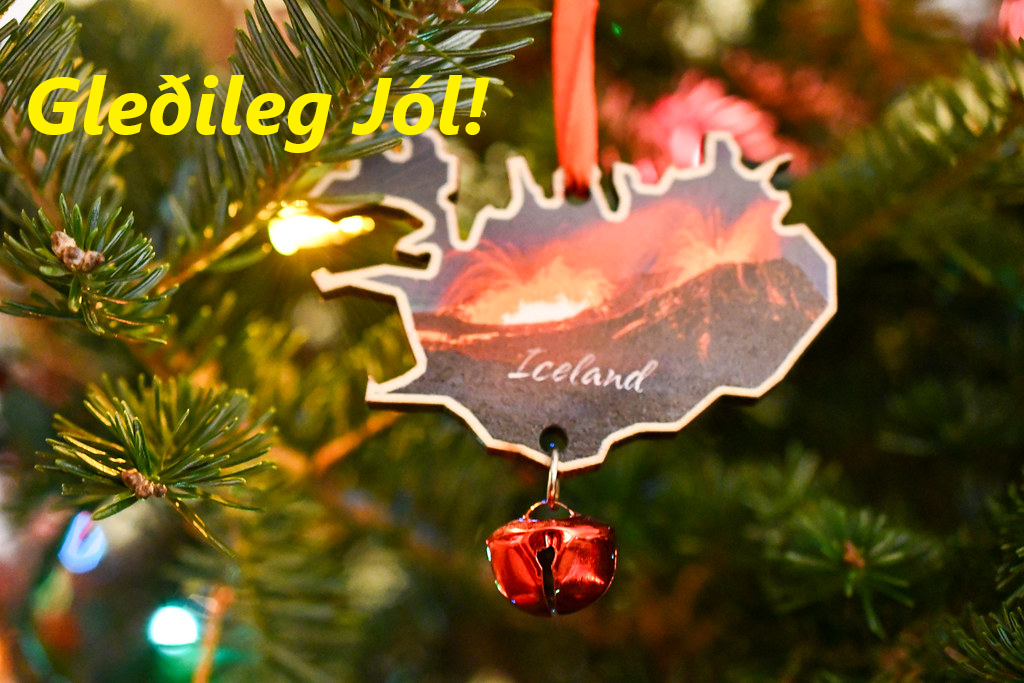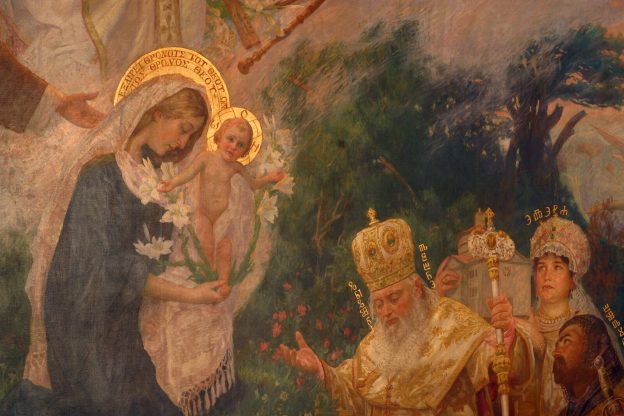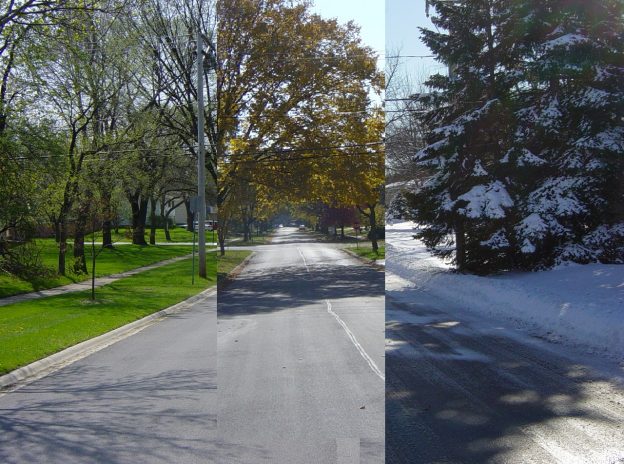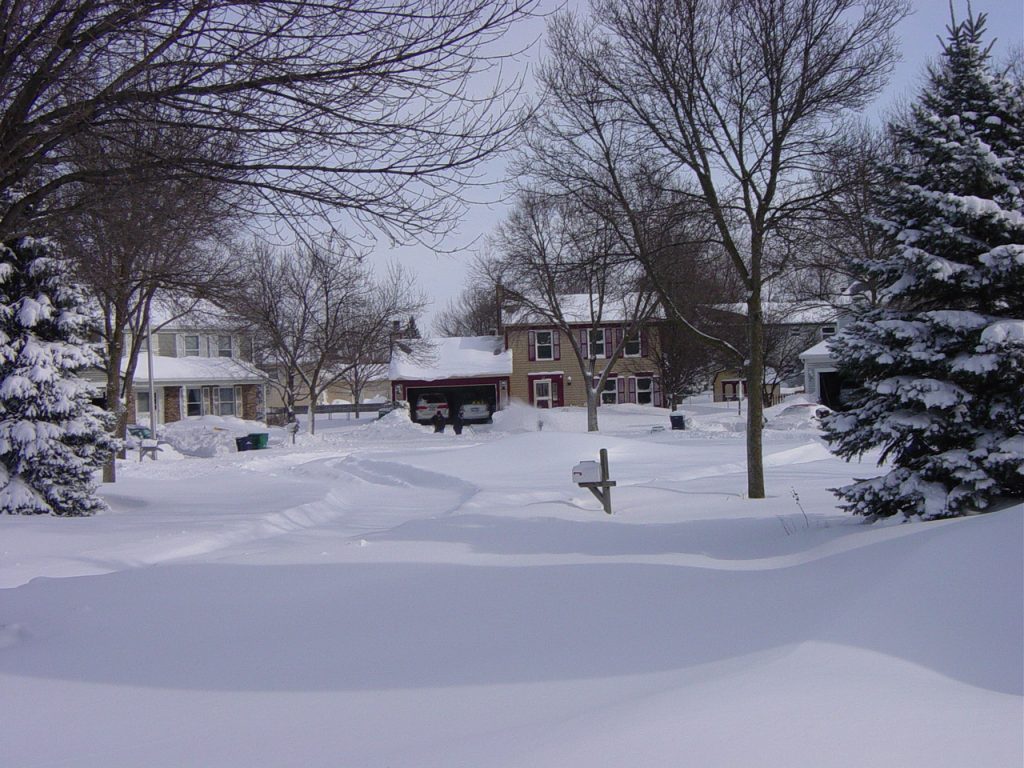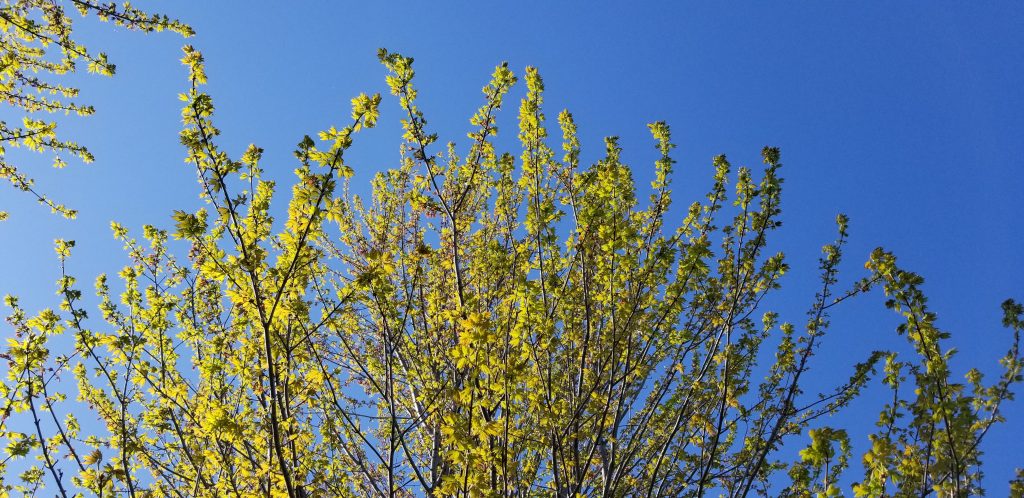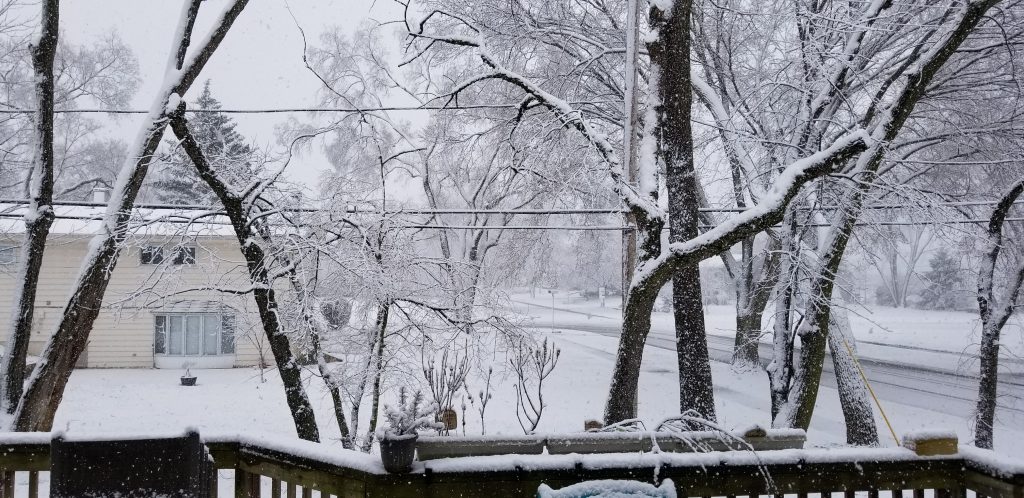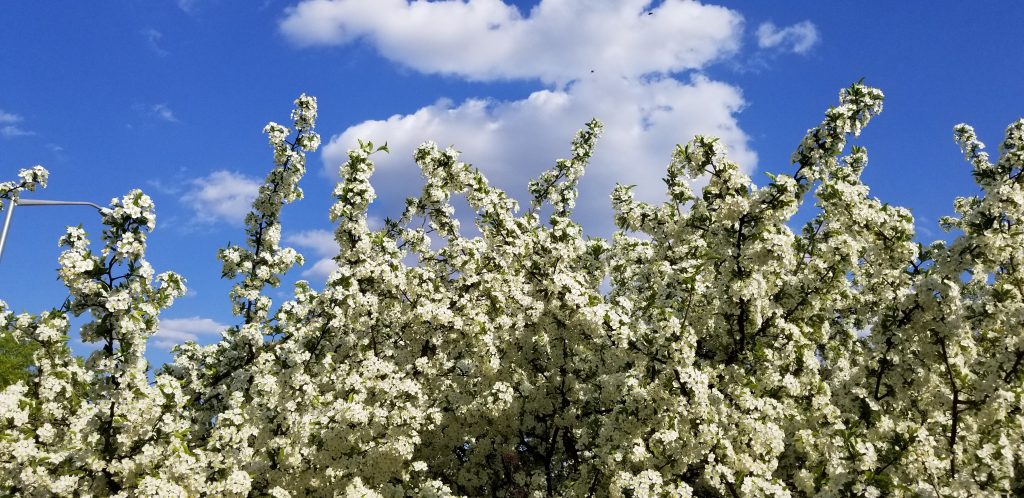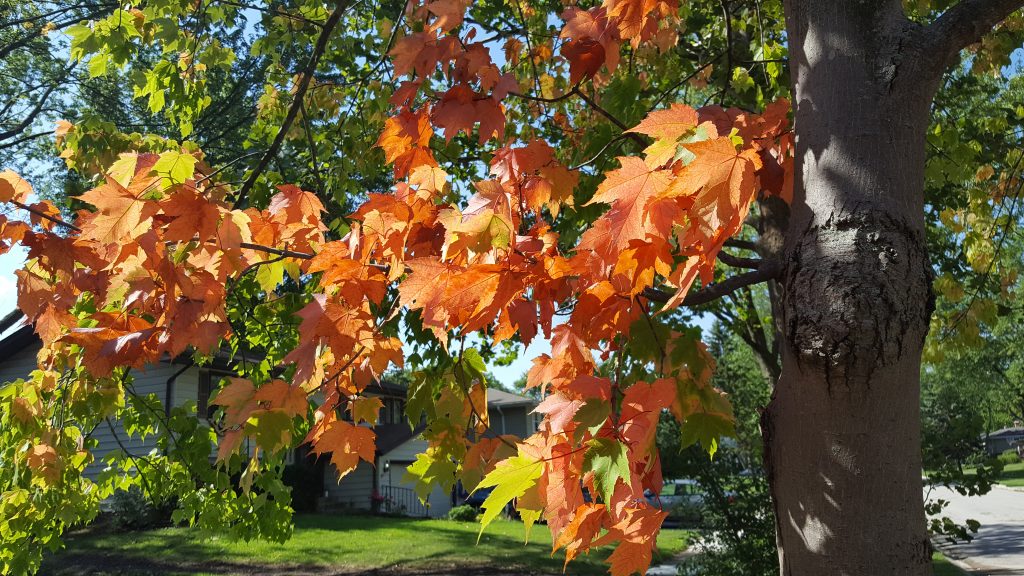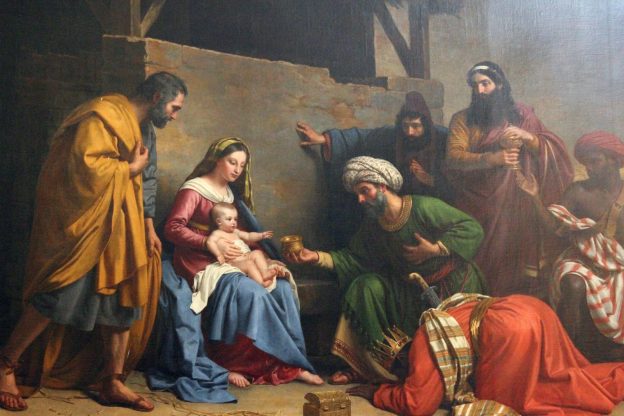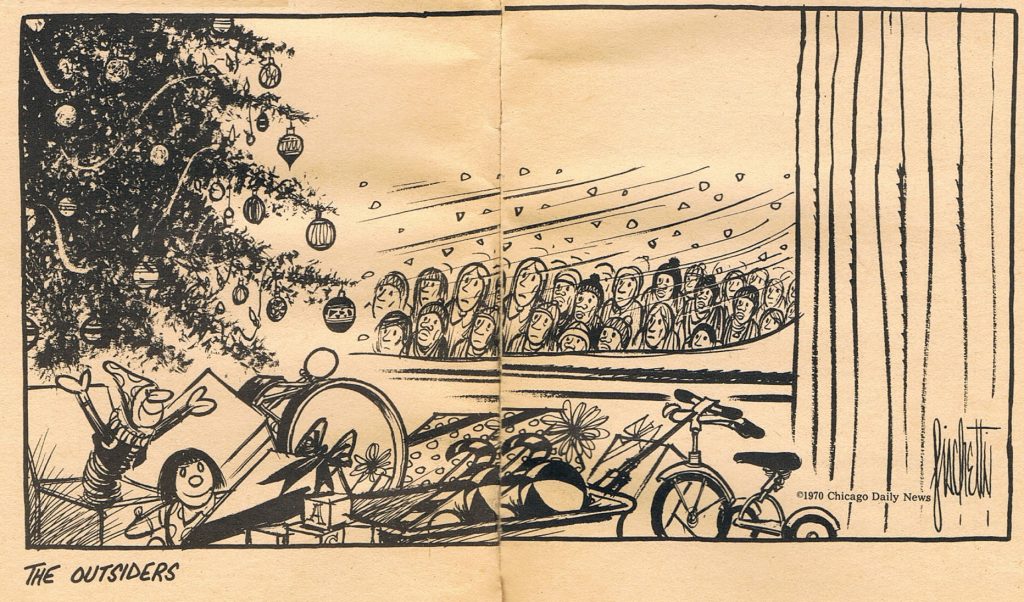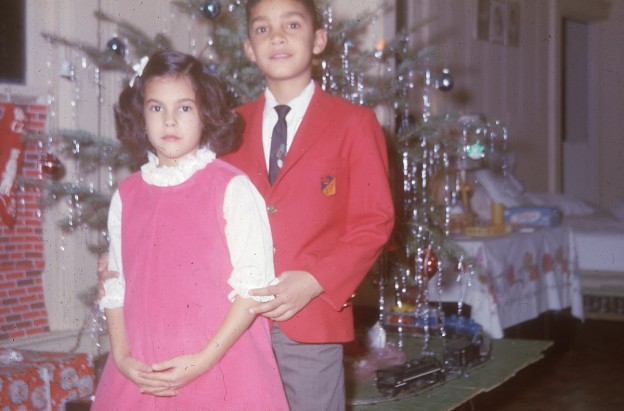People who have never been to Iceland mistakenly believe it is a year-round frozen wasteland covered in glaciers with marauding polar bears. But Icelandic winters aren’t as cold as one might think because the warm currents of the North Atlantic Gyre create a milder climate. Average December temperatures in Reykjavik and Southern Iceland are in the low 30s, while they are about 15° colder in the northern regions.
Reykjavik has around 12”-16” of snow every year but gets rain more often than not. The north, being colder, gets far more snow, which is great for the ski resorts in Ísafjörður, Akureyri and Seyðisfjörður.
The long, dark nights are the real killer, with only 4-5 hours of daylight in Reykjavik and about an hour less in the north. However, this means more time for viewing the Northern Lights when the skies are clear.
Despite the cold and darkness, the Icelandic people welcome the holiday season with 26 days of Jól (“Yule”), embracing culture, traditions, festivities, food and more. It begins on December 12 with the appearance of the first Yule Lad and continues until January 6.
“Gleðileg Jól!” (“Gley-thi-leg Yole”) is “Merry Christmas” in Icelandic.
Aðventukrans – Advent Wreaths
Icelanders are predominantly Lutheran, and like Catholics, they celebrate Advent, the four weeks leading up to Christmas. Originating in Germany, Aðventukrans (“Ath-ven-tu-kranz”) Advent wreaths, are based on a pre-Christian Germanic ritual anticipating spring’s return. The evergreen ring symbolizes the continuation of life. There are three purple or blue candles symbolizing Hope, Faith and Peace, and one rose candle symbolizing Joy.
Making Adventurkrans is an Icelandic family Christmas tradition. They light the candles, one by one, each Sunday before Christmas; the rose candle is lit on the Third Sunday of Advent, also known as Gaudete.. People will say a short prayer or blessing after lighting the candles and some will light a white candle in the center of the wreath for Christmas Eve or Day.
(Our pageantry-obsessed former priest wasn’t satisfied with any old Advent wreaths. He commissioned a four-foot Advent wreath on a circular metal frame, which descended from the ceiling via a remote-controlled winch, with three-inch diameter, 18-inch candles at $25 each. Predictably, it failed to work one year and had to be repaired at considerable cost.)
Christmas Markets
Every weekend people can flock to Christmas markets that are similar to the Christkindlmarket in Chicago:
Downtown Reykjavik’s Ingólfstorg Square becomes Jólaborgin (“Yol-a-bor-gin) or Yule Town. The Icelandic telecommunications company, Nova, builds an ice rink in the square and rents out skates and helmets. There are shops in the nearby Christmas Market in Austurvöllur (“Ooey-stir-vooy-thlur̥) Square for traditional Icelandic gifts like their famous wool sweaters. There are games and goodies for kids as well as musical performances.
The Christmas Village in Hafnarfjorður,(“Haf-na-fyor-thur”) a port town about 10km/6mi southwest of downtown Reykjavik, features shops selling handcrafted gifts and jewelry, and food stalls selling cookies, hot drinks and smoked lamb. There’s live music, storytelling and the occasional elf lurking about.
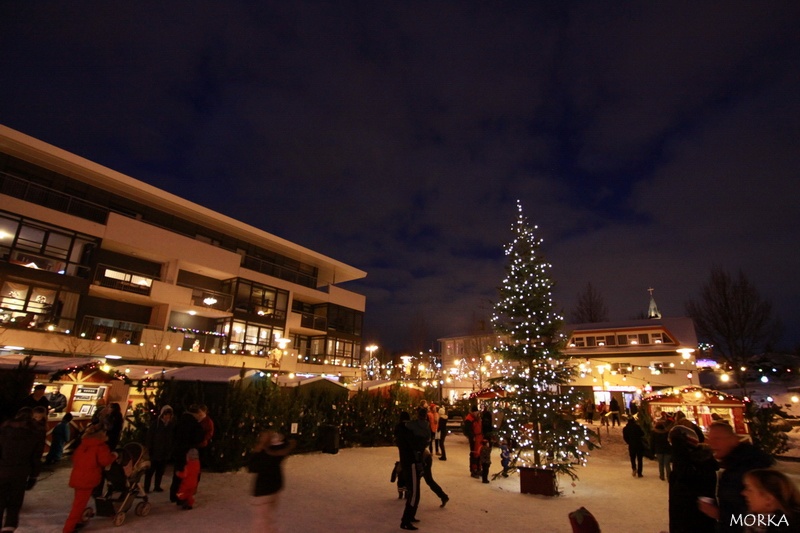
Christmas Market at Elliðavatnsbær in Heiðmörk(“Heyth-mork”), is located in a forest preserve 15 minutes outside Reykjavik. The local Reykjavík Forestry Association, “combines holiday cheer with sustainability,” selling eco-friendly products and locally grown Christmas trees. Click here for a Christmas greeting.
Christmas at Árbæjarsafn (“Ar-bay-yar-saf”), Iceland’s Open-Air Museum is open year-round and tells the story of Iceland’s past through historic buildings. In the summer museum staff dress in period costumes and do “chores” like smoking meat and spinning wool. (I wonder if they get a Britney Spears look-alike to churn butter for them.) During Advent the museum provides a “traditional Icelandic Christmas” experience. Visitors can make candles and bake laufabrauð, (“lauv ah brat”), Icelandic leaf bread.
Video: 6 Must-See Icelandic Christmas Markets in Reykjavik!
Jólasveinar – Thirteen Santas
Saint Nicholas, Europe’s Santa Claus is based on Nicholas of Myra, a 3rd century bishop who became the patron saint of children and others. He leaves presents for good children on Saint Nicholas Day, the saint’s feast day, which Western European Christians celebrate on December 5 or 6 and Eastern European Christians celebrate on December 18 or 19.
Iceland does not have Santa Claus. Instead, the Icelandic people celebrate 13 days of Christmas with Jólasveinar, the Yule Lads. According to legend, the Yule Lads of yore were troublemakers whose names reflected the pranks for which they were known. The contemporary Yule Lads are more benevolent, and one may encounter them on the streets. Every night from December 12th through December 24th, one Yule Lad appears and leaves small gifts in shoes that children place in windows. They leave in the order they appeared, starting on December 25 until the last one disappears on January 6th, not to be seen until the following season.
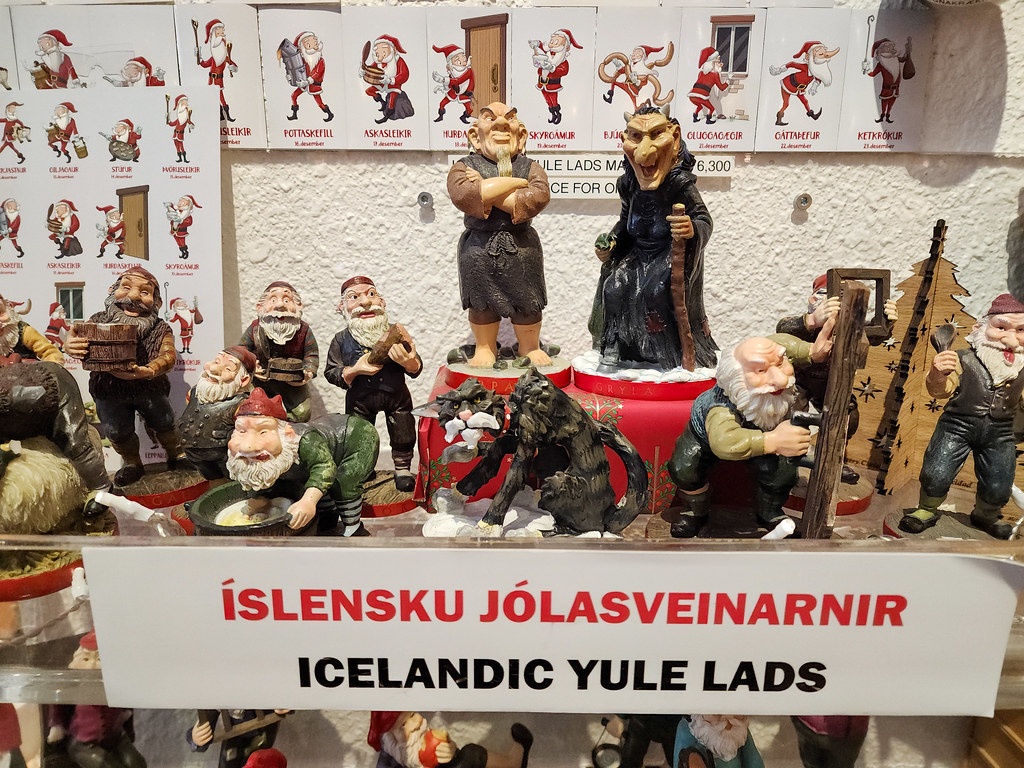
1.Stekkjastaur (Sheep-Cote-Clod): The first Lad to appear, he has two peg legs, harasses the sheep and sucks milk from them
2. Giljagaur (Gully Gawk): Hides in barns and steals milk froth from the buckets
3. Stúfur (Stubby): Very short and eats crusts from the pans he steals
4. Þvörusleikir (Spoon-Licker): Tall, thin, steals and licks þvörur (long wooden spoons)
5. Pottaskefill (Pot-Licker): Steals leftovers from pots
6. Askasleikir (Bowl Licker): Hides under beds and steals askur, one’s personal dining plate
7. Hurðaskellir (Door Slammer): Slams doors during the night
8. Skyrgámur (Skyr Gobbler): Obsessed with skyr, Icelandic yogurt
9. Bjúgnakrækir (Sausage Swiper):Hides in the rafters and steals smoked sausages
10. Gluggagægir (Window Peeper):Looks in people’s windows for things to steal
11. Gáttaþefur (Door Sniffer): Uses his large nose and keen sense of smell to find Laufabrauð.
12. Ketrókur (Meat Hook): Steals meat with a hook
13. Kertasníkir (Candle Beggar): Steals edible fat candles from children
One will often run into men dressed as Yule Lads roaming the streets of Reykjavik.
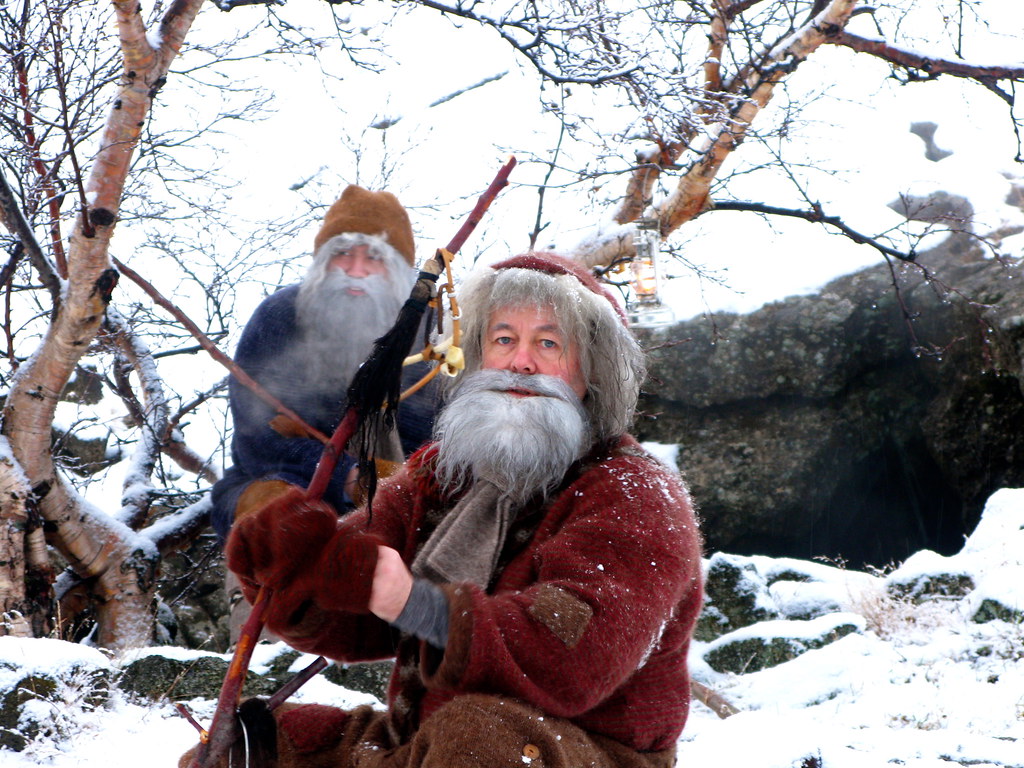
Santa’s Enforcers
European cultures created demon companions for Saint Nicholas: Krampus in Austria, Zwarte Piet in the Netherlands, Knecht Ruprecht in Germany, Père Fouettard in France, and Schmutzli in Switzerland. They were dark characters, sometimes depicted with horns who punished the bad children by beating them with birch rods or leaving them coal and stones instead of gifts and sweets.
Grýla, Troll Mother
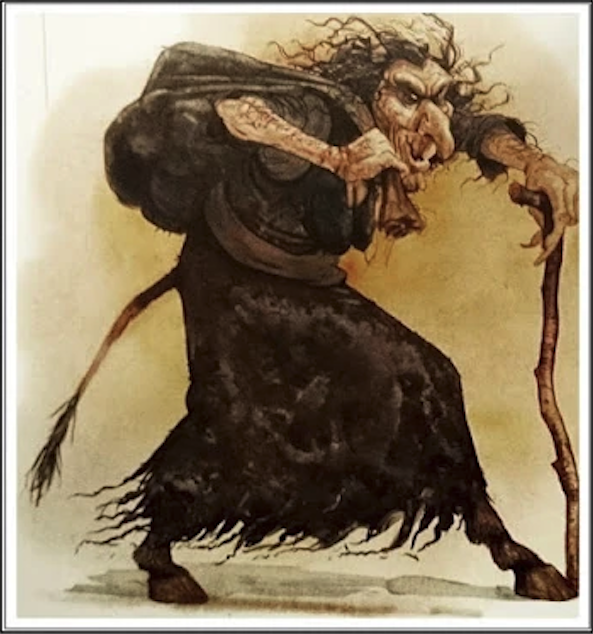
Iceland has Grýla, the Yule Lads’ troll mother, a thoroughly unpleasant woman who has claws, hooves and a tail. She snatches naughty children, stuffs them into a sack and takes them back to her cave to be boiled in a cauldron and eaten. (I’m reminded of a quote by W.C. Fields: “There’s no such thing as a tough child – if you parboil them first for seven hours, they always come out tender.”)
Jólakötturinn, Grýla’s Bad Kitty
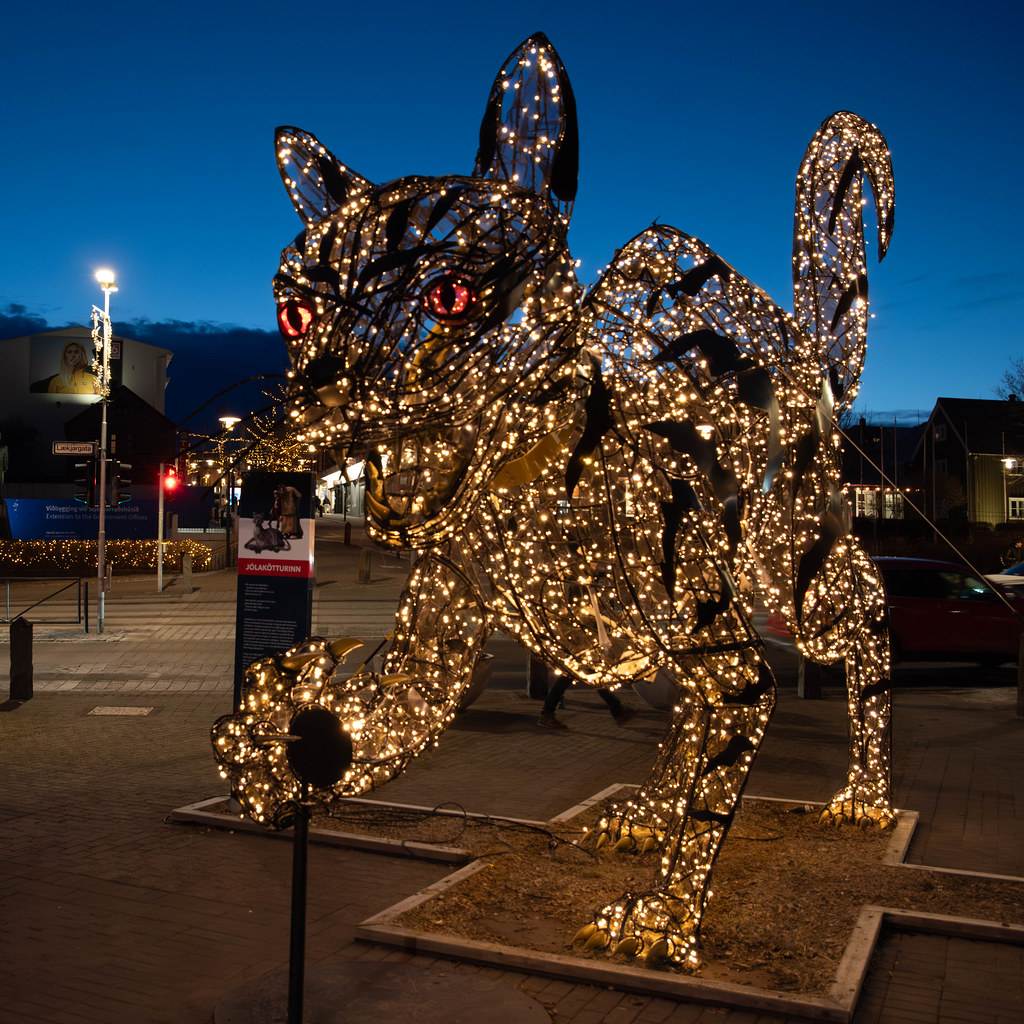
Grýla’s pet, Jólakötturinn (“Yo-la-ka-thur-in”), the Yule Cat is an enormous creature with glowing red eyes, sharp claws and whiskers,. It eats children who have not received any new clothes for Christmas, making them grateful for getting mundane gifts like socks, scarves or sweaters. (It’s thought that farmers used it as an “incentive” for workers to finish processing their wool before Christmas.) A large lighted statue of Jólakötturinn appears in downtown Reykjavik every year.
Read more about the Yule Lads, Grýla and Jólakötturinn.
Christmas Traditions
December 23 – Þorláksmessa(“thor laks messa”) –St. Thorlac’s Day
Named for Iceland’s patron saint, this is the final day of Christmas preparation. People celebrate by eating kæst skata (“kay-est skah-tah”), putrefied skate (stingray) that smells of ammonia, along with potatoes and sweet rye bread. Like hákarl (“har-kardl”), the infamous fermented shark, it is an acquired taste and definitely not for the faint of heart. (I’d rather indulge pasteles, the Puerto Rican version of Christmas tamales.)
December 24 – Aðfangadagur (“ahth fang a da gur”) Christmas Eve
Families gather on Aðfangadagur for dinner which may include:
• Hangikjöt (“han-gee-kot”) – lamb that was traditionally hung in a shed and smoked in sheep dung because the original settlers cut down all the birch trees. It is sliced and served hot or cold with potatoes, peas and laufabrauð.
• Hamborgarhryggur (“Ham-bor-gar-ree-gur”) – glazed smoked rack of pork, imported from Hamburg, Germany by way of Denmark. It is often served with caramelized potatoes and Waldorf salad (a classic side when I was a kid)
• Jólajógúrt (“yo-la-yo-gurt”), literally “Christmas yogurt,” available only during Christmas. It has an interesting list of ingredients, including strawberries, cocoa butter and cocoa paste, barley malt and malted wheat.
• Rjúpa (“ryoo-pa”) rock ptarmigan, a type of grouse, served with caramelized potatoes and red cabbage. It’s now a protected species and difficult to come by although the lucky may find it in certain restaurants.
Jólasmákökur
After dinner it’s time to bring out desserts and drinks. Nothing says Christmas like Jólasmákökur (“Yo-las-mah-koh-kur”), Icelandic Christmas cookies:
• Marens Kornflexkokur (Chocolate Cornflake Cookies): Made simply with egg-whites, sugar, chopped chocolate, corn flakes and vanilla. Our version is Cornflake Wreaths, cornflakes mixed with melted marshmallows dyed green, shaped into wreaths and then dotted with Red Hots
• Sörur (“Sore-oor”): Almond macaroons topped with chocolate butter cream, then dipped in a chocolate glaze. Also known as Sarah Bernhardt cookies, they were created in Copenhagen in 1911 as a tribute when she came to Denmark for the Danish publication of her memoirs.
• Lakkrístoppar (“Lah-krees-top-par”): Meringue cookies with chocolate and filling of choice, usually licorice.
• Spesíur (“spay-see-ur”): A sugar cookie topped with a chocolate button, similar to our Peanut Blossoms, sans peanut butter. Offset the buttons and you can make googly eyes.
• Hálfmánar (“half-man-ar”): Sugar cookies made with cardamom and lemon. The rolled dough is cut into circles, filled with rhubarb jam and folded into half-moons before baking. The traditional Icelandic recipe uses ammonium carbonate (“smelling salts”) instead of baking powder, which gives your kitchen an obnoxious odor.
• Piparkökur (“pee-par-ko-kur”): gingerbread cookies with pepper added to the dough.
• Vanilluhringir (“van-eel-oo-ring-ere”): A classic vanilla cookie, shaped into rings, like one of the cookies in the Danish Cookie tins.
• Bessastaðakökur (“Bess-ah-stah-ta-ko-kur): A sugar cookie made with clarified butter, then topped with Demerara sugar and chopped almonds before baking. Bessastaðir is the Icelandic White House, and presidents often serve these cookies to guests.
Icelandic Christmas Drinks
• Malt og Appelsín also known as Jólaöl (“Yol-ahl”): Combination of two popular soft drinks, Egils Maltextrakt, and Egils Appelsín, a fizzy orange soft drink. People can combine the two at home or buy pre-mixed cans during the holidays. Pour the malt into the orange soda to avoid a Mentos and Coke explosion.
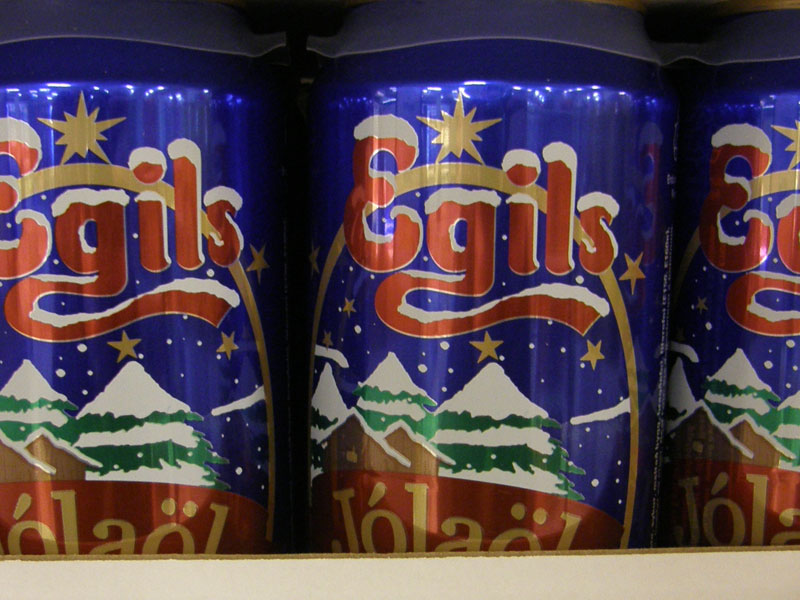
• Brennivín (“Bren-uh-vin”): the infamous ‘Black Death,” a potent akvavit/aquavit, made from fermented potatoes and flavored with caraway.
• Christmas Beers. Limited-edition brews available only at Christmastime with names such as:
○ Bjólfur Grenibjór: caramel and pine flavors
○ Magnús Frúktus (“fruity Christmas beer”): flavored with raspberries, blueberries, cherries and
vanilla.
○ Jólakisi IPA (“Christmas Cat beer”): tropical flavors of mango, pineapple, and passion fruit.
○ Einstök’s Icelandic doppelbock: A dark lager with roasted malt, caramel and coffee flavors.
Finally, at midnight, families will gather to open presents and partake in the cherished Icelandic tradition of exchanging books, known as Jólabókaflóð,(“Yol-ah-boke-ah-flot”) the Book Avalanche. It’s a time to curl up by the fire with hot cocoa and treats and share stories or read. Indeed, their love for books and storytelling is so great that one in ten Icelanders will publish a book!
December 25 – Jóladagur (“Yo-la-da-gur”) Christmas Day: The day after the night before is quieter, a time to relax, (and eat, of course!)
December 26 – Annar í jólum (“An-ar-ee-yo-lum”) Boxing Day: Literally “another one for Christmas” people leave their homes and gather with friends and family they may not have seen on this “second day of Christmas. Bars are open again and the party continues.
December 31 – Gamlársdagur (“Gam-lars-da-gur) New Year’s Eve: Translated as “Old Age Day,” Icelanders send out the old year with a bang. After yet another dinner, people will gather around 8:30pm at several sites in Reykjavik and in other towns for Áramótabrennur (“Ar-ah-mo-ta-bren-ur), the traditional New Year’s Eve bonfires. After that, everyone will go home to watch Áramótaskaup (“Ar-uh-moh-tas-kup”) the annual satirical sendup of the year’s events at 10:30pm. It’s comparable to John Oliver’s Last Week Tonight year end reviews.
Just before midnight people gather to watch fireworks displays and set off their own. Iceland Search and Rescue (ICE-SAR) teams use fireworks sales (this is the only time when private fireworks are legal) to raise funds, taking in about 800 million ISK ($6,284,368) in 2022. One can also watch the Reykjavik fireworks from anywhere in the world, courtesy of RÚV TV online (6pm CST). People wish each other, “Gleðilegt nýtt ár!” (“Glee-tha-leg-neet-ar”) which means “Happy New Year!” in Icelandic. The celebrations continue well into the night, with parties, gatherings, and festivities, much like the annual debauchery in Times Square.
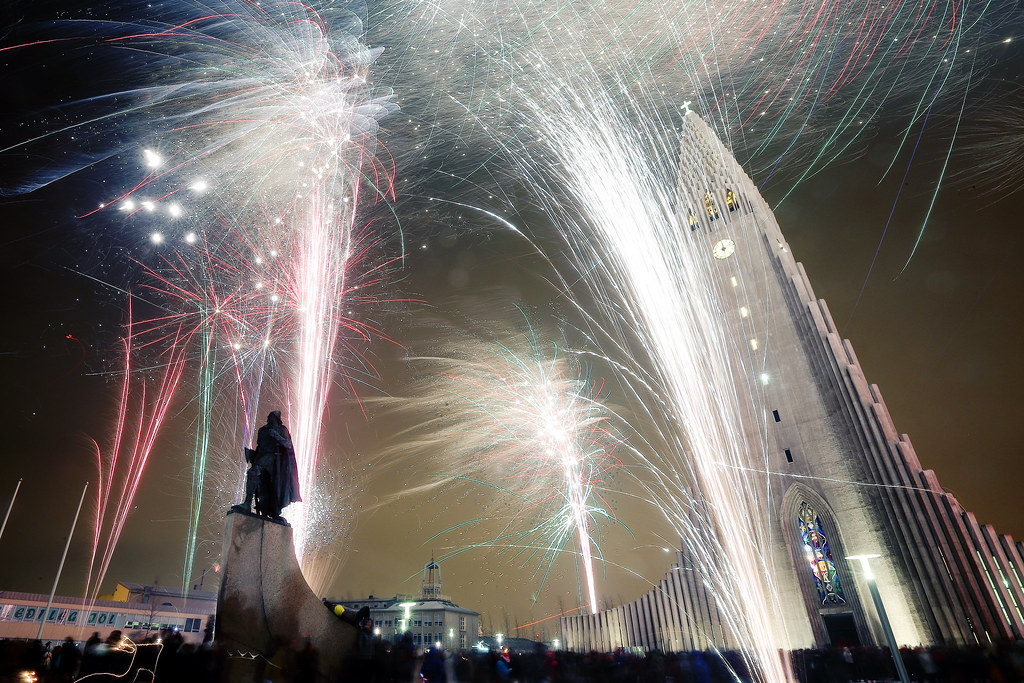
January 1 – Nýársdagur (“Nee-yaus-da-gur”) (New Year’s Day): Aside from nursing hangovers, on New Year’s Day people will leave their homes open or set a place at the table to welcome elves and trolls.
January 6 – Þrettándinn (“Thre-tan-din”): Also known as “Old Christmas” and “Second New Year’s Eve,” January 6 marks the end of the Christmas season. Christians celebrate Epiphany, the day the Magi arrived in Bethlehem and God revealed Himself through the baby Jesus. Icelanders also celebrate Þrettándinn with more bonfires in honor of the fairies and elves that are leaving. Many local celebrations elect Fairy Queens and Kings who lead participants in “elf dances” around the fire.
Amusing folk legends arose around Þrettándinn. One is that cows miraculously begin speaking in rhyming couplets that will drive anyone listening mad. Another is that seals are the soldiers from Pharaoh’s army who drowned in the Red Sea. They shed their skins, becoming humans who dance naked on beaches before retrieving them and returning to the sea. The last Yule Lad, Kertasníkir (Candle Beggar), leaves until the following December 23.
Read about the Westman Islands’ traditions: Þrettándinn Iceland’s Enchanting Celebration (Twelfth Night)
Photo credits:
Iceland Ornament: Joe Shlabotnik on Visualhunt.com
Hafnarfjorður Christmas Market: Mórka on VisualHunt.com
Yule Lads in costume: eeems on Visualhunt.com
Icelandic Yule Lads: Joe Shlabotnik on VisualHunt
Grýla: Thorsteinn1996 Creative Commons
Christmas Cat: Paul-W on Visualhunt.com
Jolalol: Malene Erkmann on VisualHunt
Reykjavik Fireworks: Neil Melville-Kenney on Visualhunt.com
